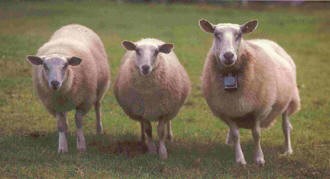Rygja sheep are originally from Rogaland in south west
Norway. In the 18th century the local Norwegian Spael sheep were crossed with
several imported breeds, such as Merino, South Down, and Leicester. After 1860
mostly Cheviot and Sutherland sheep were imported and had also an influence. In
later years further crossings have been made with Texel, Finnsheep, Dala, and
Steigar sheep.
Rygja sheep are now spread throughout Norway and are bred
for both meat and wool production. They are white and long-tailed. Both rams
and ewes are polled. Their wool wool is uniform with a mean fiber diameter of
37.4 microns. Their mean greasy fleece weight is around 3.5 kg. They are known
for producing shiny wool, almost free of medullated fibers but with less bulk
than the wool of Dala and Steigar sheep. Their wool is used for many purposes,
mostly various types of yarns, and pelts are used for nappa-leather and
woolskins. The wither height of the adult rams is 76 cm. Adult live weight is
110 kg for rams and 75-80 kg for ewes. The mean litter size is 1.89 lambs at
birth and 1.52 weaned. Mean carcass weight of lambs is 18.3 kg when slaughtered
at the age of 6 months. The largest proportion of their carcasses falls into
grade O in the EUROP classification system.
